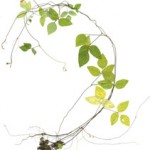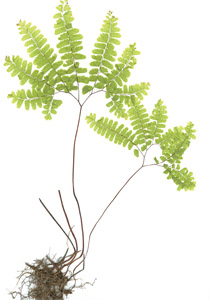 The Northern Forest Digital Herbarium is a unique online resource featuring 200 plant specimens (with User Guide) to promote forestry education for all learning levels and ages in northern communities and across the Ojibwe Ceded Territory of northern Michigan, Wisconsin, and Minnesota.
The Northern Forest Digital Herbarium is a unique online resource featuring 200 plant specimens (with User Guide) to promote forestry education for all learning levels and ages in northern communities and across the Ojibwe Ceded Territory of northern Michigan, Wisconsin, and Minnesota.
No need to sacrifice living plants for plant identification studies. Using actual digitally scanned plant specimens, you can use the Digital Herbarium to learn how identify woodland plants by their appearance and by the habitats they grow in. Names for each plant are given in Ojibwe, English and Latin. Many include a description of how they have been traditionally used by the Ojibwe people.
The Herbarium increases learner appreciation, knowledge and understanding of the importance of the diversity of northern forest types and vegetation and the threats invasive plants pose to this diversity. Its purpose is to foster learning, respect and stewardship… for our forests and each other, and as a compliment to the Northern Forest Digital Herbarium.
Using the Digital Herbarium: Discover plants by searching by on the habitat where they are found, a specific plant species, or just Enter the Herbarium! Clicking a species will open a complete description.
 Print Hard Copies of Digital Plants: The Digital Herbarium allows you to create full color hard copy images of each plant with field notes. Click on a plant species to open the full description. At the bottom of each description find a highlighted link with word “print.” Click on this link to open a full page printable image of the plant.
Print Hard Copies of Digital Plants: The Digital Herbarium allows you to create full color hard copy images of each plant with field notes. Click on a plant species to open the full description. At the bottom of each description find a highlighted link with word “print.” Click on this link to open a full page printable image of the plant.
Dedication:
The Northern Forest Herbarium is dedicated to learners of all ages and walks of life… may our knowledge and appreciation of the forested public lands we share continue to grow… as we explore, enjoy, harvest, and care for them, serving as guardians for future generations.
Miigwech (thank you) for funding through a Wisconsin Environmental Education Board grant, the University of Wisconsin-Extension, with help from CESA 12, Great Lakes Indian Fish and Wildlife Commission (GLIFWC), and USDA Forest Service (Chequamegon-Nicolet National Forest) that has made this project possible. The Herbarium was a partnership between Kathleen Morgen-UW Extension and Karen Danielson-GLIFWC, both dedicated biologists and educators, who have walked on.




